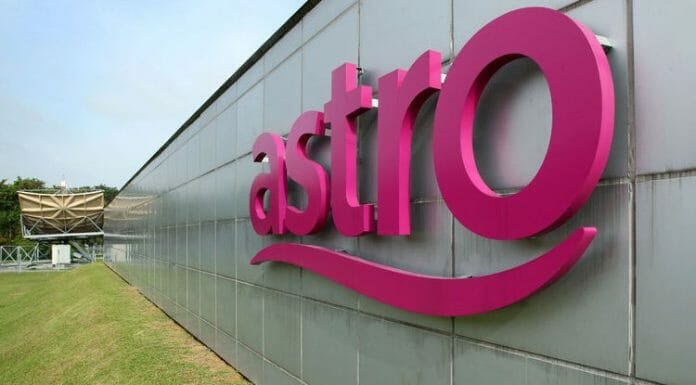Astro’s 1HFY24 results missed expectations as sustained TV subscriber churn and high content costs weighed on bottomline. On the bright side, higher QoQ adex enabled the TV segment to turn around from pretax losses.
Fell short of expectations
Kenanga Investment Bank (Kenanga IB) , in its Result Note today (Sept 26) said Astro’s 1HFY24 core net profit came in at 40% and 39% of our full-year forecast and the full-year consensus estimate, respectively. The shortfall versus Kenanga IB’s forecast was mainly attributed to higher-than-expected finance and content costs.
Weaker due to sustained subscriber base erosion
1HFY24 topline contracted by 7% mainly due to lower contribution from TV subscriptions and radex. The larger reduction in core net profit (-45%) emanated from a spike in financing costs, as well as higher depreciation and content costs. However, decline in bottomline was partially cushioned by: (i) higher adex, (ii) narrowed home-shopping losses, (iii) improved contribution from the radio segment, and (iv) lower taxes.
Higher ARPUs failed to uplift TV revenues
On the bright side, the TV segment turned around from pre-tax losses in 1QFY24 as a result of increased adex. Additionally, pay-TV ARPUs expanded for the 3rd consecutive quarter to RM99.1 (2QFY23: RM97.4). This was largely attributed to higher take-up of fibre packages and churn of lower ARPU customers. On the flip side, ASTRO’s TV base sustained its quarterly decline following net churn of 41k subscribers.
Key takeaways from its analyst briefing are as follows:
1. The group announced a new dividend policy where it intends to distribute dividends from PATAMI depending on overall business and earnings performance, capital commitments, financial conditions, distributable reserves and other relevant factors. This is a departure from its previous policy of a minimum 75% payout of consolidated profits.
2. Astro expects initial costs of approximately RM52m from implementation of its voluntary separation scheme (VSS) program. However, the cost savings will only be realised progressively given that its employees will be released on staggered basis. Therefore, the impact of lower manpower expense is expected be fully felt by FY25.
3. The group reiterated its focus on production of local content TV subscriber churn and high content costs weighed on bottomline. On the bright side, higher QoQ adex enabled the TV segment to turn around from pretax losses. Kenanga IB cuts their FY24F and FY25F earnings by 11% and 9%, respectively, lower the TP to RM0.56 (from RM0.66), but maintain its MARKET PERFORM call.
4. The recent acquisition of Basecamp Films, which is a post-production studio, is expected to enhance the group’s internal capabilities in production of local content. In addition, it is also anticipated to provide its services to the wider industry.
Earnest initiatives to improve fortunes
Amidst topline pressure, Astro is implementing transformation initiatives to defend its Pay-TV subscriber base, attract adex and diversify its earnings via acquisition of adjacent businesses. Notable measures include: (i) introduction of addressable advertising, (ii) venture into fiber broadband, (iii) technology upgrade to enhance the features of its set top boxes, (iv) launch of sooka streaming service, and (v) new aggregated content offerings (e.g. Netflix, Disney Hotstar). Meanwhile, on the cost cutting front, Astro is also stepping up measures as evident from implementation of its VSS in end-July, Kenanga IB said.
Cut forecasts
Kenaga In cuts their FY24F and FY25F earnings by 11% and 9%, respectively, to reflect higher content costs and interest expense. The bank also lowered their WACC assumption to 7.8% (from 7.9%) as they adjust their risk-free rate assumption to 4% (from 4.5%) in-line with our revised in-house forecast. Coupled with the cut in earnings forecast, the TP (DCF; TG: 1%) is revised to RM0.56 (from RM0.66). There is no adjustment based on a 3-star ESG rating as appraised by them.
Kenaga IB continues to like ASTRO given: (i) normalisation of content costs in FY24 due to absence of major sporting events, (ii) subscriber retention and ARPU boost from new fibre broadband bundles, and (iii) highly cash generative operations given subdued capex. However, consumer sentiment remains tepid amidst inflationary pressures and a sluggish economic outlook. Therefore, this translates to sustained pressure on subscriber retention and TV adex.
Risks to thier call include: (i) weak MYR leading to higher content cost for imported programs, (ii) competition from illegal set top boxes and over-the-top (OTT) streaming platforms, and (iii) margin pressure due to escalated costs for technology investments to enhance set top box features.









